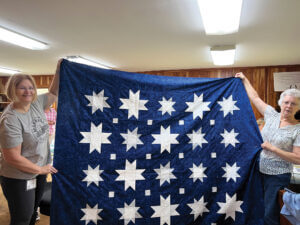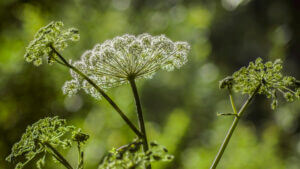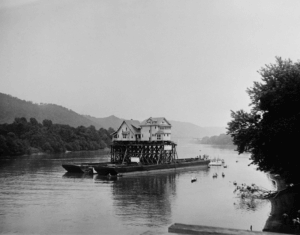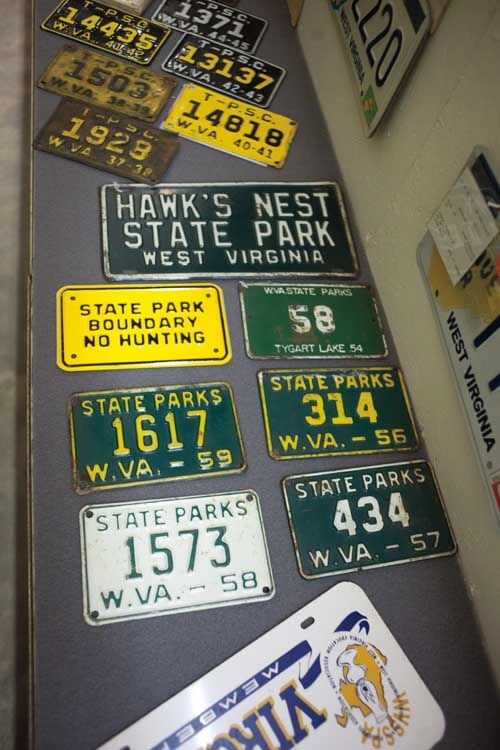
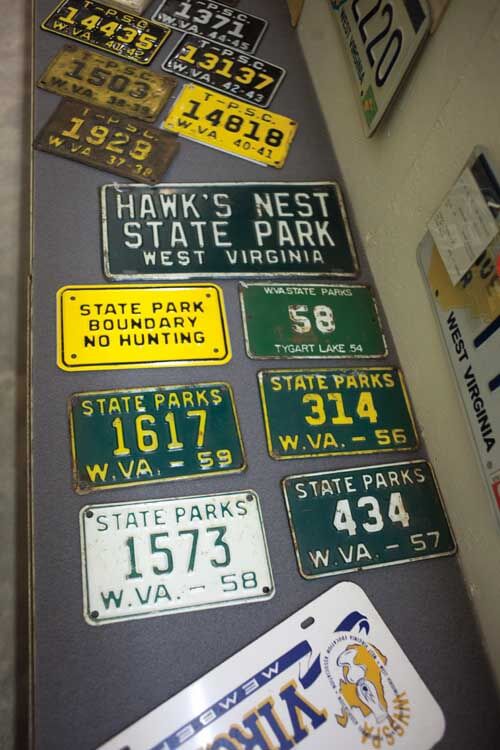
Cliff’s automobile museum keeps West Virginia auto history alive in Harrisville.
If you’re near Parkersburg heading to North Bend State Park, you can shoot straight down U.S. 50 and roll into Cairo, West Virginia, almost as quickly as the crow flies. But car buffs will want to take State Route 16 through Harrisville, where a license plate “inspection” is probably past due. It is here in the heart of Harrisville where lifelong resident Cliff Weese and his wife, Sue, display the world’s largest collection of more than 4,000 West Virginia license plates—a passion project since 2009. And in the words of Dr. Seuss, “That is not all, oh no, that is not all.” The collection is just one part of the building that houses Cliff’s Museum of Car Memorabilia, a 13,000-square-foot museum curated over a lifetime of collecting. The space is meticulously set up as a mid-century car dealership with World War II–era auto-related memorabilia displayed in a showroom, a parts room, a repair shop, an office, and a large collection display room.
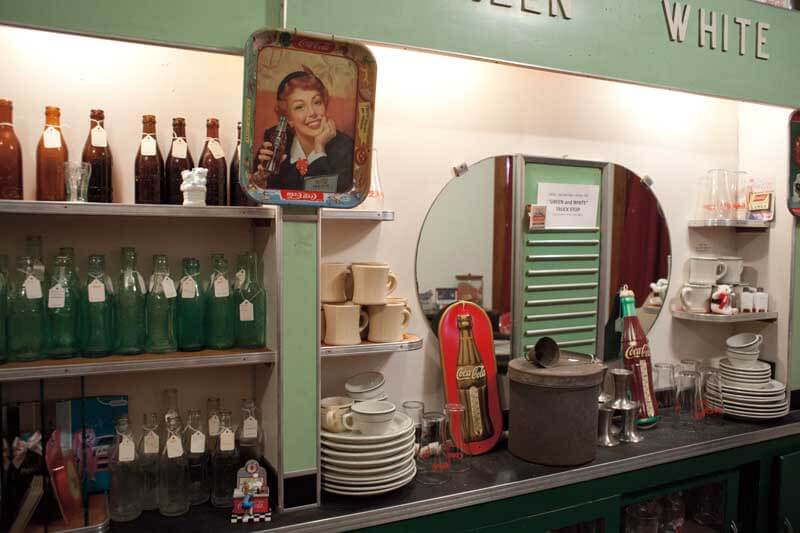
There is also a local history section, a packed research library that includes auto repair manuals dating back to 1903, and a full-room re-creation of a restaurant featuring an antique Coca-Cola collection with all West Virginia–made bottles from the early 20th century.
How Cliff’s Got Into Cars and Collecting
Weese, 70, inherited his love of cars from his dad, Lloyd Weese, an auto body repairman who passed away when the younger Weese was only 12. He carried on the legacy of his father by also becoming an auto body repairman early in life and has carried his inherited love of cars throughout his life. Of course, as long as they’re Chevys and not Fords, Weese quips. In high school in the late 1960s, he worked for Harrisville Sales and Service, a Ford dealership, where he would take out three or four cars from the dealership’s large collection of vintage automobiles, wash and wax them, and get them running for local parades. So strong was Weese’s love of historical automobiles that, as a 17-year-old high school senior, he restored a 1917 Model A and drove it in the 1968 homecoming parade.
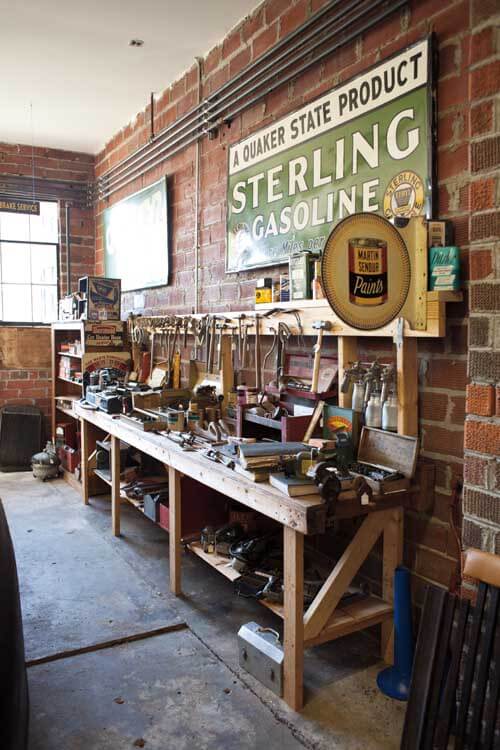
“The first 10 years of my working life, I did auto work and body repair. Back then there was no money in it, so I got a chance to get on over in Friendly, West Virginia, at Union Carbide, which is now Momentive Performance Materials,” Weese says. He put in 33 years at the plant before retiring.
That good, steady income fueled his passion for collecting and restoring cars, and through the years Weese has owned more than 100 antique cars. While Cliff’s museum does have 14 unique antique automobiles as well as bicycles and motorcycles, the majority of the exhaustive collection is authentic memorabilia that Weese collected at shows—among them, the Hershey National Car Show in Hershey, Pennsylvania, that he has attended since 1968. If it has to do with cars, he has collected it. Catalogued and displayed in the building is a little bit of everything auto: chauffeurs’ badges, drivers’ licenses, registration cards, automobile titles, state inspection stickers, automobile club badges, license plate attachments, cereal box and other play licenses, West Virginia travel guides, state-issued road maps, and oil company–issued road maps. He started collecting license plates, oil cans, signs, and other memorabilia when his daughter Ashley was about 3 years old as a fun, bonding hobby. “We did it together, and so I got more into the small stuff. She went to the license plate conventions with me and to Hershey with me,” says Weese, who bought her a 1977 Chevy pickup with a 1974 350 Corvette engine dropped in it that she drove through high school and college.
A Man’s Car Cave Gone Wild
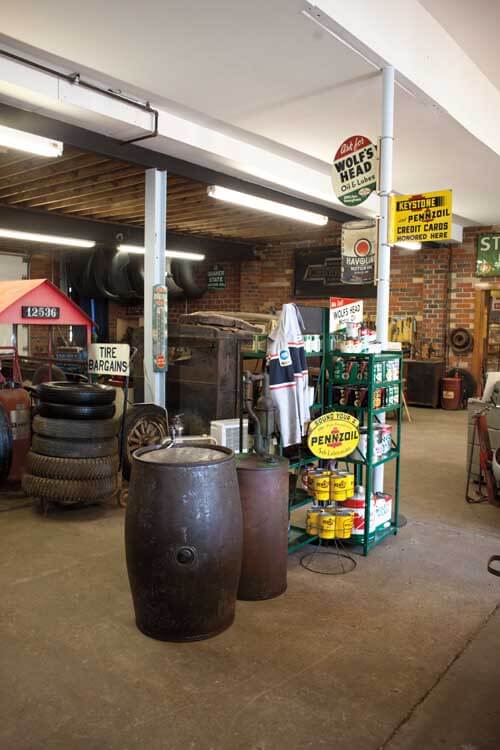
Weese’s first “museum” that was open to the public was a den over his home garage. It was so packed and well-displayed that Goldenseal magazine featured his home collection in 1999. But when Weese and his daughter began visiting area museums after a hernia operation that put him out of work for a while, he realized that he needed to think beyond the den. “We were walking around the Oil and Gas Museum, and I told Ashley that we have as much junk as they do, if we just had a place to display it.” Weese designed a country store–garage that he planned to build out of rough lumber in his front yard. But when the Lowther building, which had been an auto dealership up until 1956, became available, he jumped on it. “I literally bought four walls. I thought, oh, maybe a year’s worth of work and I would have a place to share my stuff with people, but nine years later we started moving things in. When I got the building, you couldn’t lock it up, water was pouring in through the roof, bringing down the ceilings, and it was starting to get into bad shape.”
With new drywall and nice touches like dark trim from Ritchie County oak, Cliff’s museum finally opened about a dozen years ago. The timing could not have been better, as Cliff also married Sue, a high school friend who has helped catalogue and organize the massive collection. “I had stuff in my house, and my garage, and the attic of my garage. Sue and I have been married for 12 years. She came along in time to help me organize everything in here. And she is lucky because before she came along I had all of this in my house,” Weese says, laughing. “I had gasoline globes above the TV and an interior kit under the bed, and by the time she came along I had everything in here. I tell people that this junk isn’t worth anything if you can’t share it with people.”
A Drive Into the Past
While Weese swears he didn’t like history in high school, his history teacher may be getting the last laugh. Part auto archaeologist and part detective, Weese scoured shows—and in the past decades eBay and other web sources—for all things auto West Virginia. “We find things any way we can,” Weese says. He told the license plates magazine Plates in 2019 that he spent more than $40,000 one year on license plates alone. With that kind of driven devotion to history, Weese’s license plate collection especially is more easily described by way of what it doesn’t have than the long list of what it does.
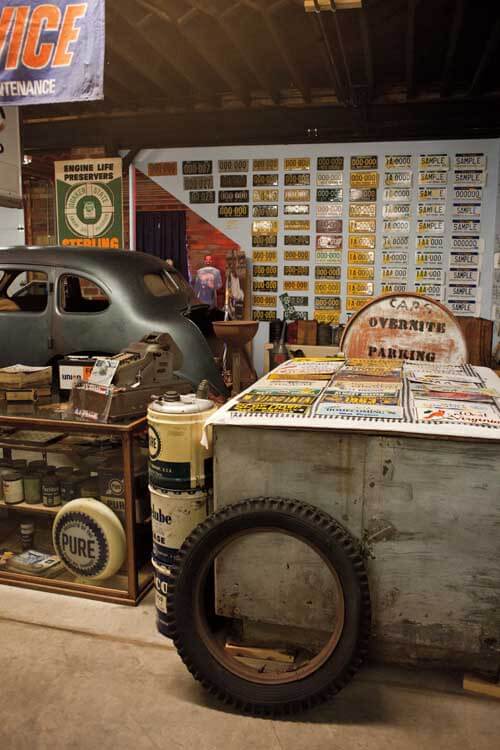
West Virginia became the third state to issue metal plates, and Weese has the only one known to exist from 1905. He has one of only 15 of the 1906 plates known to exist. He does not have a 1907 plate, but has every year since, and nearly every special plate ever made. Since West Virginia started issuing motorcycle plates in 1917, he has every year through 2019 except for 1918 and 1921. And not only does Cliff’s have bicycle plates, governor’s plates, NASCAR plates, and military plates, but he has built museum-quality display sections for many of the specially issued plates including ones for the West Virginia State Police, which he honors with a dedicated display including other memorabilia and uniforms.
Celebrated by the West Virginia Division of Culture and History as a 2014 History Hero, Weese can spout more West Virginia auto history than a Sterling Oil can. When you visit the museum, you will learn and see evidence that there were three West Virginia oil manufacturers: Sterling, which would become Quaker State, in St. Mary’s; Tri-State Oil in Kenova; and Elk Oil and Keystone Gas Refinery at Falling Rock. There were also three West Virginia auto makers: Norwalk Motor Car Company out of Martinsburg, Jarvis-Huntington Automobile Company out of Huntington, and Packers Motor Truck Company out of Wheeling.
Weese can also recite the name of every major car dealer that once sold cars in Ritchie County towns like Auburn, Cairo, Ellenboro, Harrisville, Pennsboro, and Smithville.
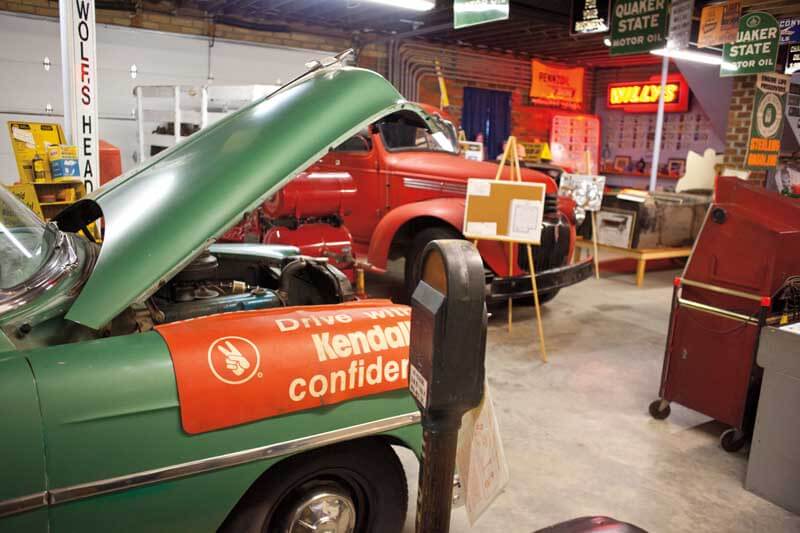
While you may no longer be able to buy a Nash or a Durant in Cairo, you can hear all about it and other treasured facts of West Virginia’s automotive past by visiting Cliff’s, open year-round by appointment and Thursdays through Saturdays during the summer months. The museum is free, but donations are accepted.
The first year that the museum was opened, even before it had a web page, more than 200 visitors stopped by from nine states. The couple appreciates visitors, whether they stay a few minutes or five hours—which is the record.

Sue Weese says she loves it when folks appreciate the purpose of Cliff’s Museum, which is to preserve the history of the automobile in West Virginia in an authentic way. “A lot of people who meander through here say, ‘When I was a teenager I worked at a garage,’ or ‘I hung out at the garage where my dad worked,’ and this really gets them remembering and reminiscing.”
The Building: Cliff’s Museum of Car Memorabilia
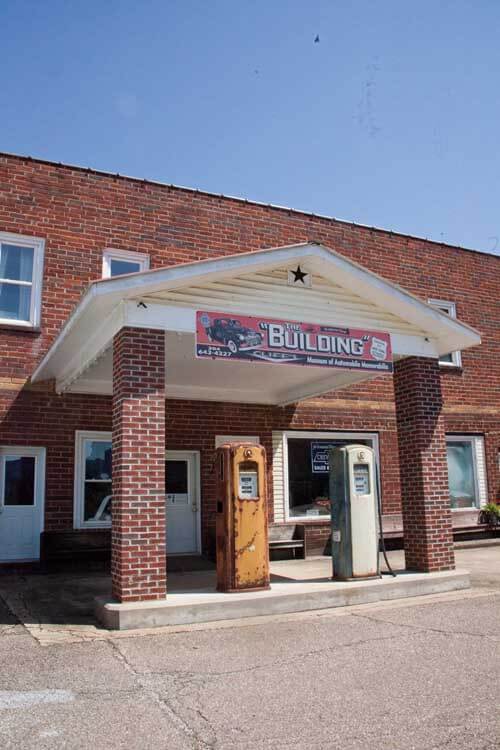
What is it? A 13,000-square-foot museum and replica 1940s car dealership that features memorabilia, 14 vehicles, and more than 4,000 West Virginia license plates, at 305 East Main Street in Harrisville.
When: The free museum—donations appreciated—is open by appointment or by chance. Contact Cliff Weese at 304.643.4227 or cliffwva@zoominternet.net
On the web: Go online at cliffwvathebuilding.com and visitritchiecounty.com
Getting there: From U.S. 50 between Parkersburg and Clarksburg, take WV 16 five miles south to Harrisville.
What else in Harrisville: The Heritage Inn, Berdine’s 5 and Dime, General Thomas Harris Museum, and several restaurants and shops.
Nearby: North Bend State Park in Cairo.
This story was originally published in the January 2020 issue of Wonderful West Virginia.
written by Dave Lavender
photographed by Carla Witt Ford



